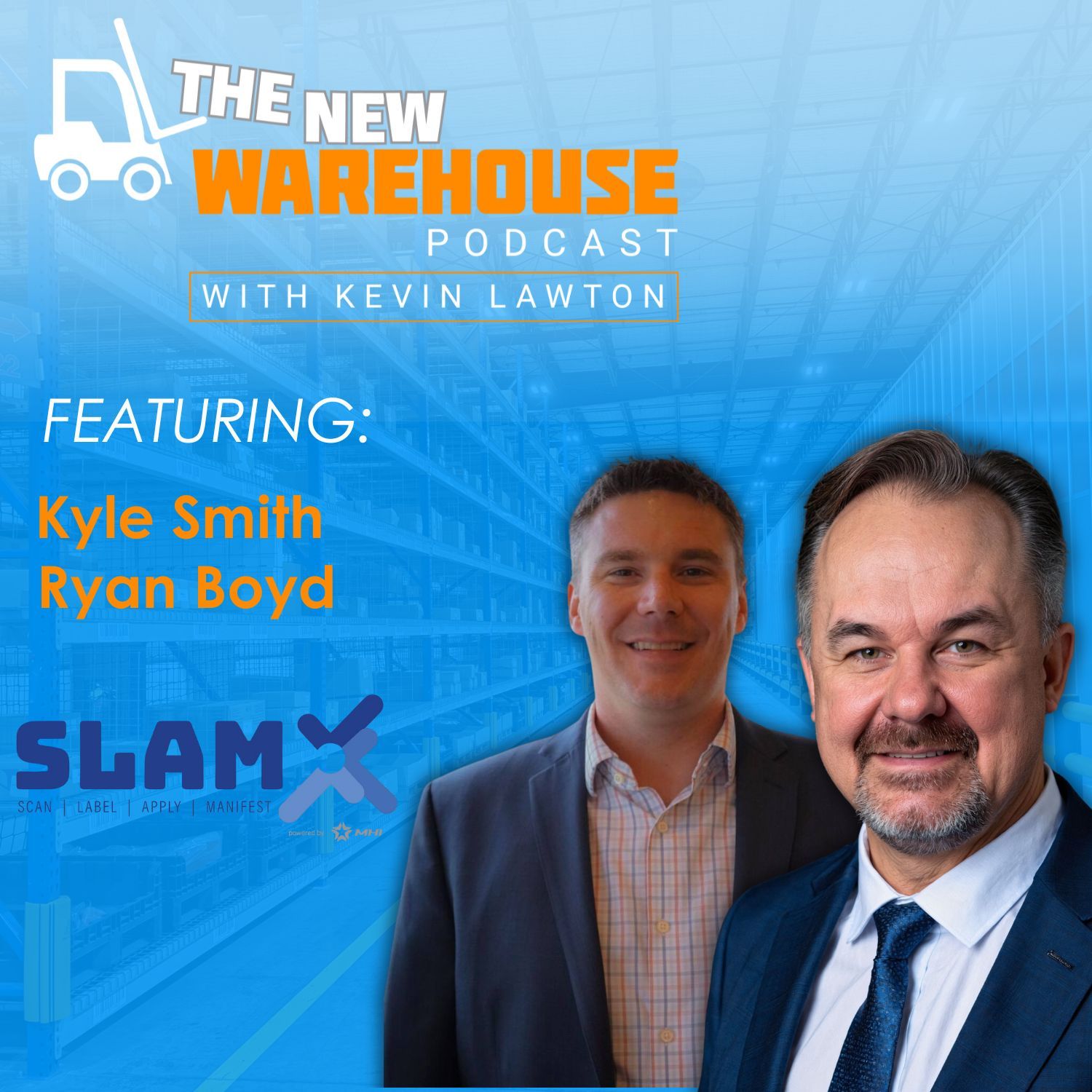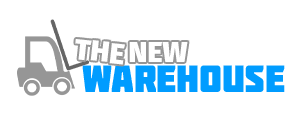
601: Warehouse Automation Readiness with SLAM
Welcome to this episode of The New Warehouse Podcast, where Kevin chats with Kyle Smith of enVista and Ryan Boyd, Executive Material Handling Professional. Both guests represent the SLAM Industry Group from MHI, delving into the evolving role of Scan, Label, Apply, and Manifest (SLAM) processes in warehouse automation. This insightful conversation, recorded live at ProMat 2025, explores not just the technologies driving change but the deeper strategic mindset required to implement them effectively.
As companies rush to automate, Kyle and Ryan caution that “you’ve got to walk before you run” and emphasize that successful automation readiness starts with strong internal processes and clear visibility. From building a roadmap to ensuring data-driven scalability, the discussion focuses on how to get your house in order before chasing cutting-edge tech. Let’s explore the highlights.
Why SLAM Is the Starting Point for Warehouse Automation Readiness
SLAM may sound like a buzzword, but it’s become a foundational concept for those looking to implement automation. Kyle and Ryan define SLAM in its practical form, scanning, labeling, applying, and manifesting, while underscoring the need to understand what’s happening within your four walls.
“It’s kind of the first step for anybody that’s thinking about automating,” says Kyle. “You have to know how you’re going to do things in a given day before you’re doing them.”
They also highlight how many facilities are being pushed into automation by top-down directives, often before they’re ready. One vivid example: a facility was still handling manufacturing calls via WhatsApp and wanted to automate.
“The automation word gets people all fired up… but you can’t automate chaos,” Ryan adds. Instead, companies should adopt a phased, strategic approach—one that breaks automation into manageable, measurable steps and ensures each layer builds on a solid foundation.
From Labels to Logistics: Building Trust and Integration into Automation
SLAM may begin with labels, but the underlying challenge is to build a system that works across multiple functions. That means aligning scanning, weighing, rate shopping, label placement, and dimensioning into a seamless process. Kyle and Ryan both stress that automation isn’t about replacing humans; it’s about enhancing consistency and accuracy, particularly in the last 100 feet of the warehouse.
One of the most essential elements in any automation solutions journey? Trust.
“There’s been a lot of court cases in the last few years when it comes to automation technology… You really need to dive into who’s got stuff in the field that’s working,” says Ryan.
They encourage customers to evaluate integrators who can pull together best-of-breed technologies from multiple vendors, rather than relying solely on single-source OEMs. This flexibility, they argue, enables integrators to address specific customer challenges more effectively and future-proof their operations against unforeseen changes.
Planning for the Unknown: Flexibility, Scalability, and the Future of SLAM
The conversation wraps with a powerful theme: planning for what you don’t yet know. As Ryan puts it, “Fix these six problems, and you’ll find another six. That’s continuous improvement.”
Customers may not have a 10-year plan, but their data likely indicates they’ve been growing at a rate of 10% annually. That insight should inform the design of automation systems. Solutions should accommodate volume swings, growth, and changes in business model, especially as e-commerce, AMRs, and AI push the industry forward.
“The most successful people are data-driven, process-driven,” says Kyle. “If you’re looking at KPIs and what your end effect is, you can back into any solution you want.”
Looking ahead, Kyle predicts growing demand for traceability, consistency, and system-driven accuracy in the SLAM zone. With AI accelerating, it’s no longer about isolated solutions—it’s about integrated ecosystems that can scale both up and out.
Key Takeaways on Automation Readiness from the SLAM Industry Group
- SLAM is more than scanning and labeling. SLAM is about visibility, consistency, and system integration
- Automating too early or without a clear roadmap leads to costly inefficiencies.
- Companies must optimize their current state before pursuing high-level automation.
- Integrators offer a multi-vendor, data-driven approach that’s often more flexible than single-source OEMs
- Trust, experience, and proven performance in the field are crucial when selecting automation partners.
Listen to the episode below and leave your thoughts in the comments.
Guest Information
To connect with Ryan on LinkedIn, click here.
For more information on enVista, click here.
To connect with Kyle on LinkedIn, click here.
For more information about automation readiness, check out the podcasts below.
MHI Industry Group: Exploring SLAM and Sustainable Warehouse Operations
597: Making Warehouse Automation More Accessible with iAutomate
573: Master Data in Warehouse Automation with KNAPP’s Marinus Bouwman
